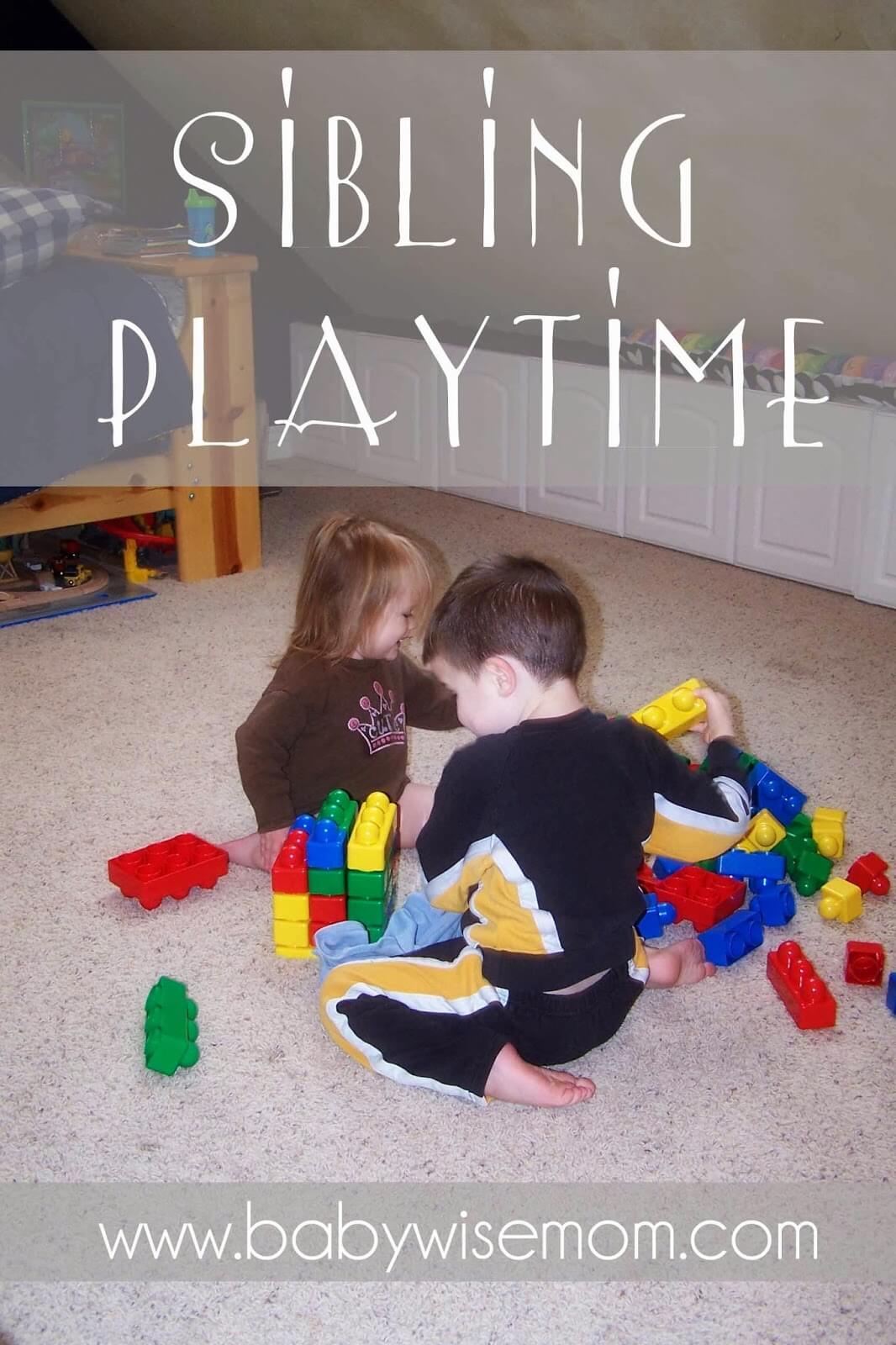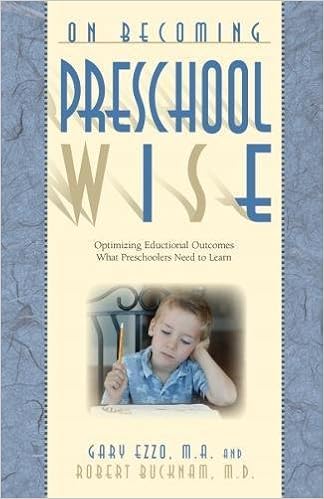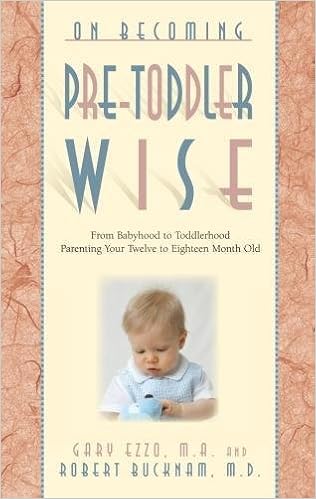Giving your children time to play with each other each day is a great way to help foster a true friendship. Read all about how to do sibling playtime here.
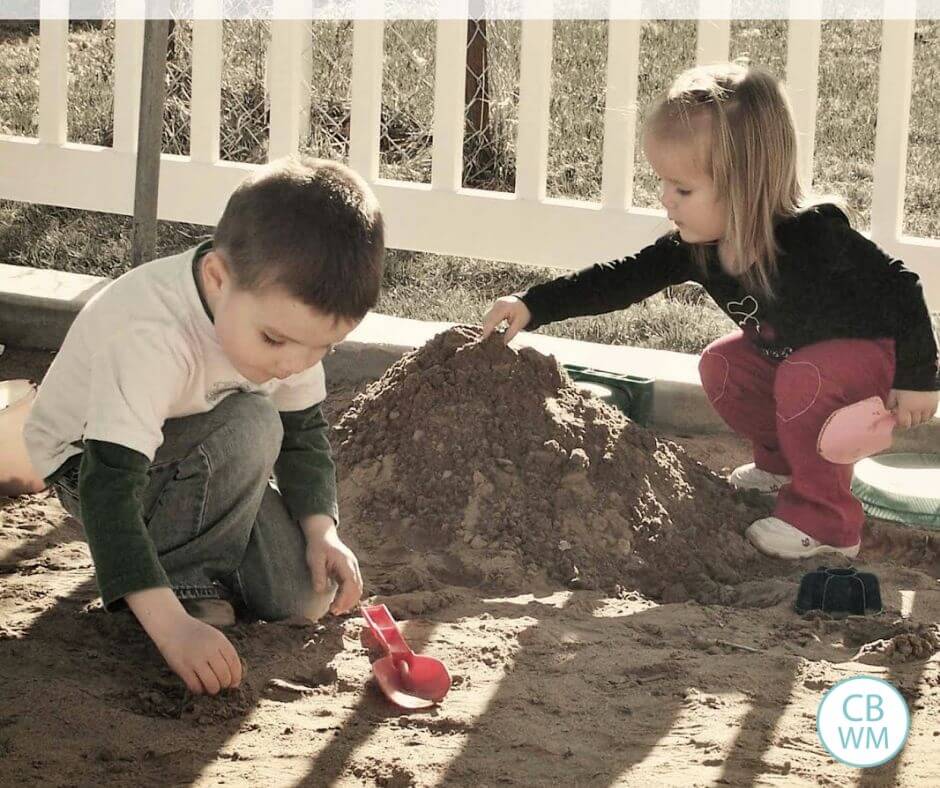
I first read about the idea of Structured Playtime with Siblings in On Becoming Toddlerwise (page 49). There isn’t a lot of explanation on it–it is pretty simple and straightforward. It is simply a structured time when siblings play with each other.
Read: A Parent’s Guide to Structured Playtime
The structured is the key thing to pay attention to here and I think it is important. Structured Playtime is talked about on that same page (page 49). Structured Playtime in short means that mom decides what activity is done. Free Playtime means the child decides. In structured playtime, mom sets the rules.
As children get older, you can allow them more freedom in choosing what to do. Sibling Playtime can be Free Playtime with Siblings. There is a lot of creativity and fun that happens when siblings are allowed to play creatively. It is important to maintain a certain amount of structure whether it is “free” or “structured.”
This post discusses how to do sibling playtime in a structured way. It is wise to start your “sibling playtime” as a structured activity and then allow them more freedom as they show they can handle it.
Post Contents
Why Sibling Playtime?
You may be wondering why have Sibling Playtime–or at least in a structured way. I know my children have learned to get along with each other and have grown to be great friends from playing with each other. This has been a great thing to help my kids really like each other.
When the children know they will be playing with each other and that they are expected to work it out among themselves, they often will work to make the dynamics of playing work. Playing with others helps children learn social skills and how to compromise.
Structured play teaches “…the child…that he doesn’t get to always be the one to choose” (Toddlerwise 49). Knowing this and accepting this helps children to learn to compromise and get along with others.
It is also very helpful when it comes time for school. Whether you plan to send your child to school or homeschool, your child will need to accept doing things when the teacher tells him to do it. This is a skill that is important throughout life. Sometimes we have to do things we don’t want to do.
Learning to get along with siblings helps kids learn to get along with friends. You will want to make sure you don’t have one sibling dominating the situation all the time. Any birth order is a potential guilt party of being the super bossy director of activities, but oldest and youngest tend to do it more often. Pay attention and correct when needed. Read up on how to respond to siblings fighting here.
It helps to talk about expectations in times of non-conflict.
Read: Training in Times of Non-Conflict
Structure the Time Slot
You, being the wise adult that you are, get to decide when the playtime happens in the day. Children play best together when they are well-rested and fed. Keep that in mind as you decide what times of day to have sibling playtime happen.
When my children were younger, we aimed for a time slot in the morning. Everyone was happier in the morning hours.
As my children got older, I didn’t even always structure the time slot. By the time my two older two children were at school Monday through Friday, sibling play happend mostly on weekends.
On Saturday, they typically liked to start off the day playing together. They grew to know themselves well enough that they knew when it seemed to be a good time to break apart for some independent play.
If one morning someone woke up feeling grumpy and needed to be alone first, I had no problem with Independent Play happening first.
So with younger children involved, structure the time slot. As your children get older, it is perfectly acceptable to allow them to give input on order of activities.
As you get to know your children, pay attention to their threshold for social interactions. My oldest two are introverts and would naturally give themselves breaks. My youngest two are extroverts and basically never want to part. Even though they don’t want to, it is good for them to have little breaks to regroup and get some down time.
Read: Independent Playtime: The Ultimate Overview
Structure the Location
Location is something I think is very important no matter the age. As your child gets older, boundaries will grow, but they must still be present. Have a clear boundary of where your children may play and where your children may not play.
When Brayden and Kaitlyn were young (2 and younger than 1), sibling playtime happened in a bedroom. That was their boundary. As they got older, it expanded to include almost one entire floor of our house–everything but McKenna’s room because that is where she was sleeping as a baby. They were free to go between each other’s bedrooms, though.
We have boundaries for playing in our home. I don’t allow toys on the main floor of my house. It doesn’t mean they never ever make their appearance. Toys often trickle along when a child is headed to a meal or something, but I send the toys back with them.
I don’t allow art stuff to leave the main floor of my home. This way, I ensure things don’t A) Get strewn about the house and hard to find when wanted later and B) Land in the hands of little toddlers who don’t understand where it is and isn’t appropriate to express themselves artistically.
A very important place to have boundaries is when your children are outside. Make it clear where they are allowed to go and where they are not allowed to go. Unsupervised toddlers and preschoolers will likely wander to neighbor’s yards and inadvertently destroy decorations or trample flower gardens. They don’t know that they shouldn’t pull apart your neighbor’s wreath, and because of that, they shouldn’t be allowed to wander where they want to without adult supervision.
Another side to the importance of outside boundaries is the safety of your child. The state of your neighbor’s wreath is very trivial in comparison to the state of your child’s body.
If your child refuses to stay where you instruct your child to stay, it is time to look at what freedoms you allow throughout the day. I have written extensively on this so see:
- How to Stop a Tantrum by Addressing the Choice Addiction
- Too Many Freedoms
- Constantly Needing to Correct the Child
- How to Know What Freedoms to Give Baby
- Wise In Your Own Eyes
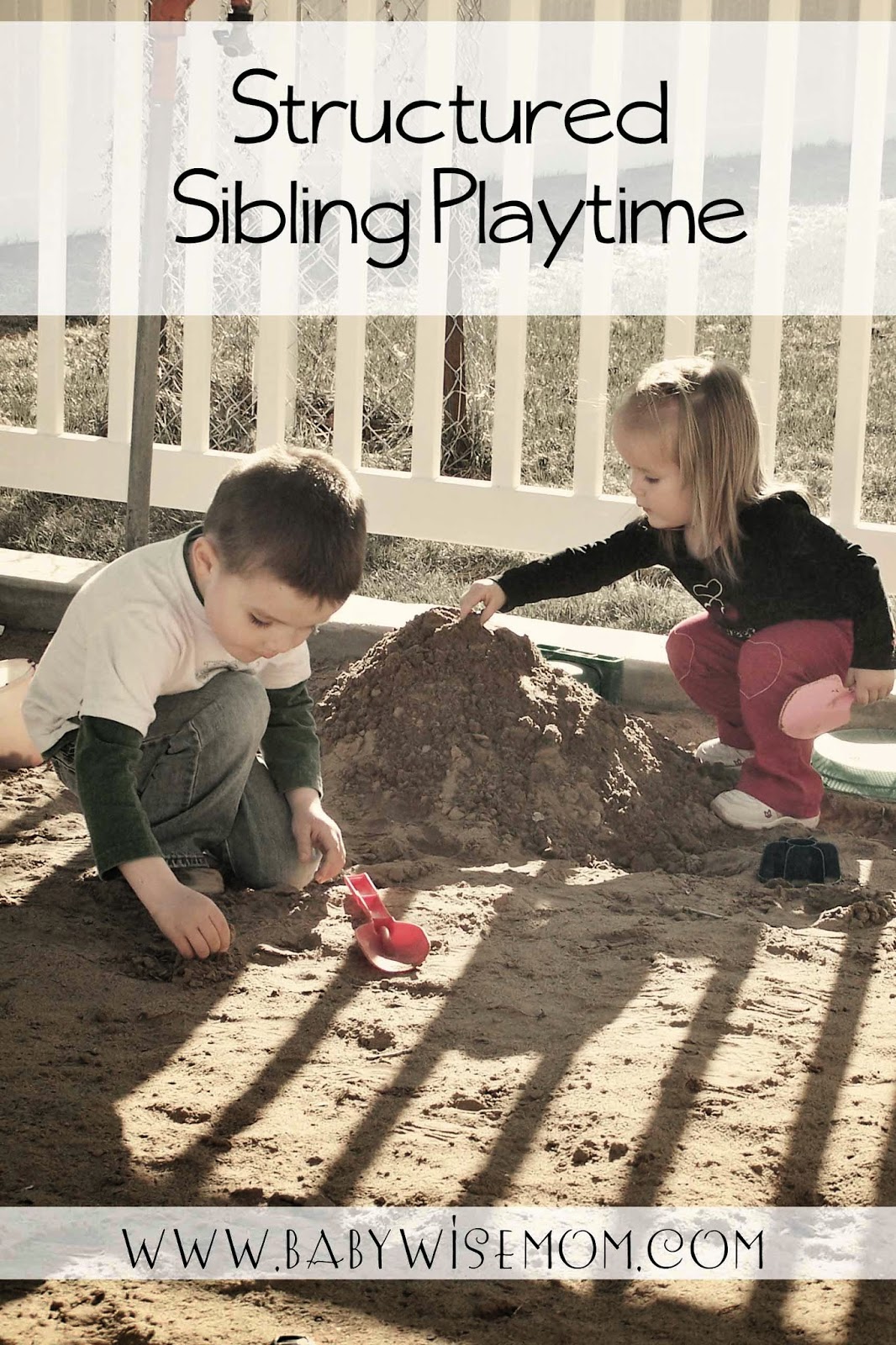
Sample Activities for Sibling Play
You might also want to structure the activities done. You don’t always have to, and you don’t always have to be specific. You can do a general “play outside” and let them decide what is played outside. Sometimes you might give a specific, “go ride your bikes outside.” You might alternate who gets to decide what the activity is. There is no list of “yes okay” and “not okay” for sibling playtime. Here are some ideas:
- Playing with toys (dress up, little people, stuffed animals, kitchen, etc.)
- Playing board games
- Playing with play doh
- Drawing, coloring, or other art
- Learning time done together
- Playing outside–swinging, playing on trampoline, playing in sandbox, running through sprinklers, building snowmen, riding bikes…
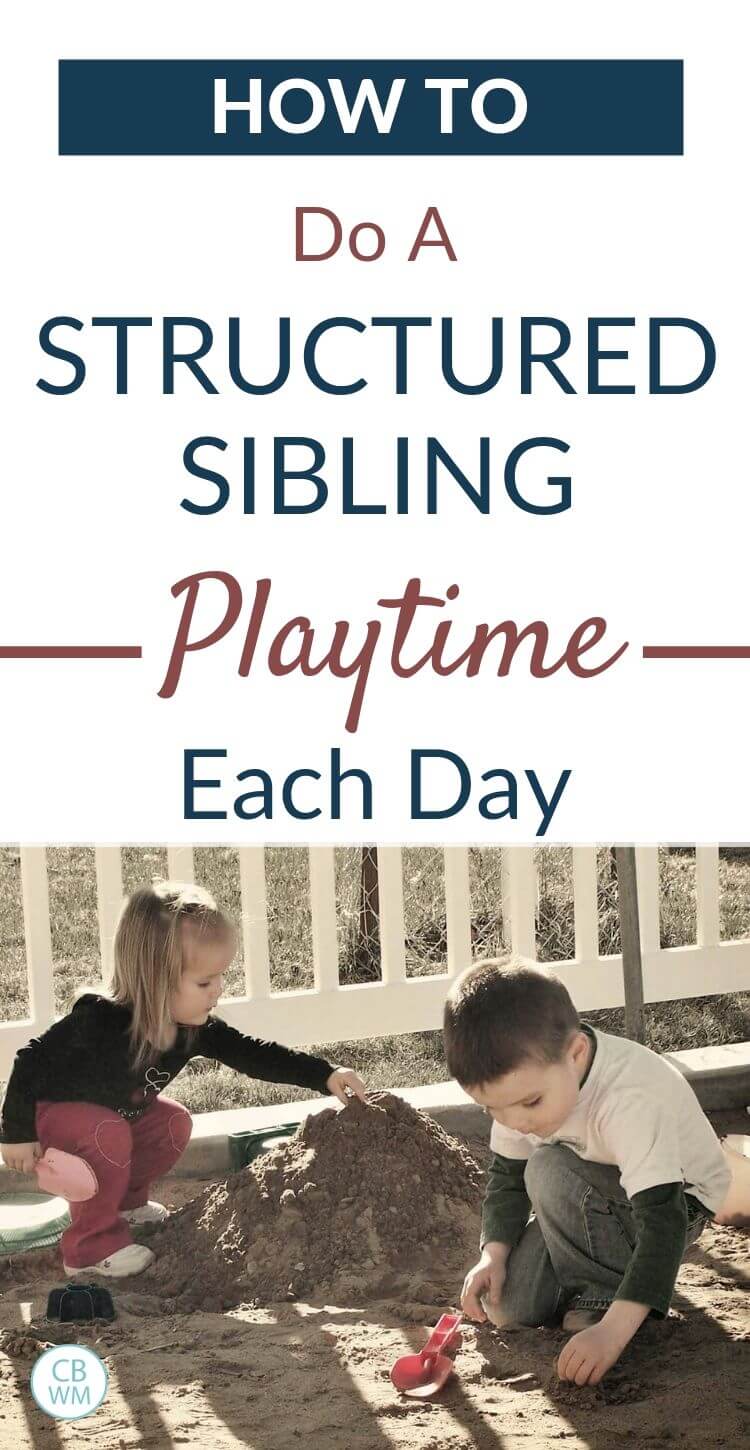
Sibling Playtime Success Story
While Brayden wasn’t jealous at the addition of Kaitlyn, he wasn’t necessarily in love with the idea, either.
Over time he grew to like and love her, but he still wasn’t extremely interested in her. Kaitlyn, on the other hand, absolutely adored him and always has.
When Brayden was about 2.5 and Kaitlyn was about 6ish months old, I was trying to think of ways to strengthen their bond and to get Brayden into playing with his little sister.
It occurred to me to try Sibling Playtime. This is mentioned in Toddlerwise and beyond.
Each day after lunch, we would all go upstairs and have “sibling” playtime. I don’t think either child is old enough to be left alone with each other, especially in the beginning stages, so I stayed with them.
I was amazed at the fast improvement I saw in their relationship. After only a couple of days, Brayden would ask to play with Kaitlyn. He finally saw that she could do more than take up the time of Mommy and Daddy.
After just a few months, he would play with her without it needing to be part of the routine. He would take her and read stories to her. He tried to try to teach her the alphabet. He loved to make her laugh and play silly games.
Also, I could bustle in and out of the room if needed. I could get little odd chores done while they have sibling playtime.
I still wouldn’t leave them alone together for more than a few minutes at a time, but they know what is appropriate and what isn’t. We took it slow, and it worked wonders.
There is little that warms my heart more than watching my two children lovingly spend time with each other.
Conclusion
Sibling playtime is a great way to help siblings like each other. As you get started with this addition to your day, stay close so you can supervise what is happening. Allow more freedom as they show they can handle it. It is such a great way to help siblings grow to be true friends.
Related Posts
